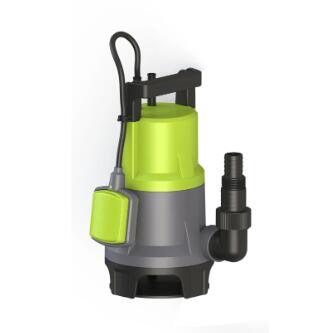Understanding Submersible Pumps: What Are They and How Do They Work
2024-08-20
Submersible pumps are a crucial component in various industrial, agricultural, and residential applications, providing reliable and efficient solutions for moving liquids from one place to another. But what exactly is a submersible pump, and how does it operate? In this blog, we'll explore the fundamental aspects of submersible pumps, their design, and their working principles, giving you a comprehensive understanding of this essential technology.
What is a Submersible Pump?
A submersible pump, as the name suggests, is a type of pump that is designed to be completely submerged in the liquid it is intended to pump. Unlike other pumps that are typically placed above the surface of the fluid, submersible pumps are installed within the fluid itself. This unique feature allows them to be highly efficient in transferring liquids, as they don't have to contend with issues like air lock or the need for priming.
Key Components of a Submersible Pump
A submersible pump consists of several key components that work together to move liquids efficiently:
1. Motor: The motor is the heart of the submersible pump, providing the power needed to drive the impeller and move the liquid. The motor is typically sealed within a waterproof casing to prevent it from being damaged by the surrounding fluid.
2. Impeller: The impeller is a rotating component that draws in the liquid and pushes it through the pump. It is responsible for creating the pressure needed to move the fluid.
3. Pump Casing: The pump casing houses the impeller and directs the flow of the liquid. It is designed to withstand the pressure and wear caused by the fluid being pumped.
4. Seal: To prevent the liquid from entering the motor and causing damage, submersible pumps are equipped with seals that ensure a watertight environment.
5. Discharge Pipe: The discharge pipe carries the pumped liquid from the pump to the surface or to the desired location.
How Does a Submersible Pump Work?
The operation of a submersible pump is relatively straightforward:
1. Submersion: The pump is placed in the fluid it needs to move, whether it's water in a well, sewage in a sump pit, or any other liquid in a tank or reservoir.
2. Activation: When the pump is activated, the motor powers the impeller, causing it to spin. As the impeller rotates, it creates a vacuum that draws the liquid into the pump.
3. Fluid Movement: The liquid is then pushed through the pump casing and up through the discharge pipe. The pressure generated by the impeller ensures that the liquid moves efficiently to the surface or to its intended destination.
4. Continuous Operation: Submersible pumps are designed for continuous operation, meaning they can run for extended periods without needing to be shut off. This makes them ideal for applications where consistent fluid movement is required.
Applications of Submersible Pumps
Submersible pumps are incredibly versatile and are used in a wide range of applications, including:
- Water Wells: Submersible pumps are commonly used to draw water from deep wells, providing a reliable water supply for residential, agricultural, and industrial purposes.
- Sewage Systems: In sewage and wastewater treatment systems, submersible pumps are used to move liquid waste from one stage of treatment to another.
- Flood Control: Submersible pumps play a vital role in flood control, helping to remove excess water from flooded areas quickly and efficiently.
- Aquaculture: In fish farms and aquariums, submersible pumps help maintain water circulation and ensure a healthy environment for aquatic life.
Conclusion
Submersible pumps are an essential tool in many industries, providing efficient and reliable solutions for moving liquids. Their ability to operate while fully submerged in fluid sets them apart from other types of pumps, making them ideal for a wide range of applications. Understanding how submersible pumps work and their key components can help you make informed decisions when selecting the right pump for your needs.



